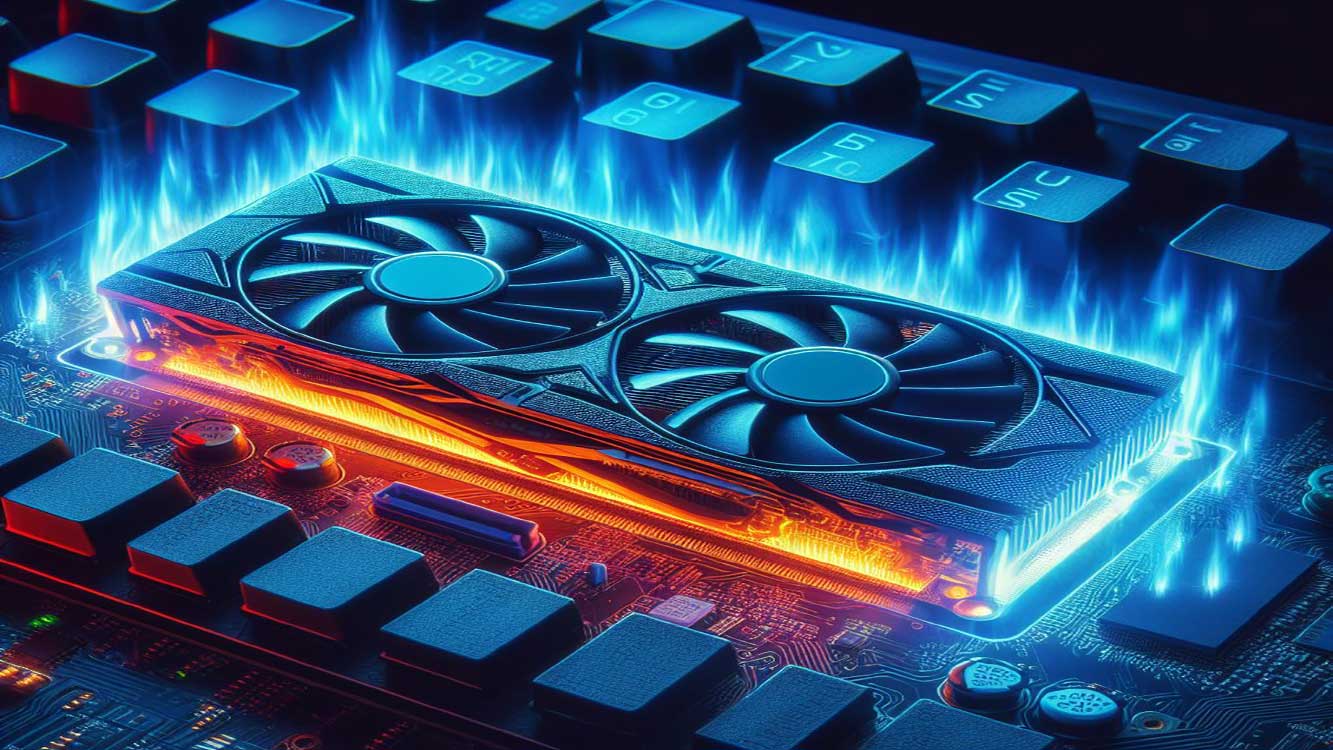When playing games on a PC, one of the things to note is the temperature of the GPU (Graphics Processing Unit) or graphics card. GPU temperatures that are too high can cause performance degradation, hardware damage, or even fire. Therefore, it is important to know the ideal GPU temperature when gaming, and how to measure and control it.
What is a GPU and Why Does Temperature Matter?
The GPU is the component responsible for processing graphics data and displaying images on the screen. GPUs are usually integrated with the motherboard (onboard) or installed separately (discrete). Discrete GPUs usually have better performance, but also generate more heat.
GPU temperature is affected by several factors, such as:
- GPU type and model
- GPU workloads
- GPU cooling system
- Ambient temperature
- Software settings (drivers, games, etc.)

The ideal GPU temperature when gaming is between 65°C (149°F) under normal usage conditions. This temperature may vary depending on the specifications and preferences of each user. However, if the GPU temperature exceeds 90°C (194°F), then it means that there is an issue that needs to be addressed.
How to measure GPU temperature?
To measure GPU temperature, you can use several ways, such as:
- Using temperature monitoring software, such as HWMonitor, GPU-Z, MSI Afterburner, etc. This software can display detailed information about temperature, fan speed, power usage, and other parameters related to the GPU. You can download this software for free from the respective official sites.
- Using the built-in Windows feature, which is Task Manager. You can open Task Manager by pressing Ctrl+Shift+Esc on your keyboard and then selecting the Performance tab. There, you can see the GPU temperature at the bottom right. However, this feature is only available for Windows 10 version 18963 or later.
- Using the game’s built-in feature, which is overlays. Some games have an overlay feature that can display information about GPU temperature, FPS (frames per second), and other statistics while playing the game. You can enable this feature through certain game or software settings, such as Steam, Origin, NVIDIA GeForce Experience, etc.
How do I control GPU temperature?
If you feel that your GPU temperature is too high while gaming, you can take the following steps to control it:
- Cleans dust and dirt that builds up inside the PC, especially around the GPU and its cooling fans. Dust and dirt can impede airflow and reduce cooling efficiency. You can use a brush, rag, or can of compressed air to periodically clean your PC.
- Replacing GPU thermal paste, which is the material that conducts heat from the GPU to the heatsink. Thermal paste can dry out or thin over time, reducing its cooling ability. You can replace GPU thermal paste by opening the GPU case, cleaning off any old thermal paste, and evenly applying new thermal paste.
- Regulates the speed of the GPU fan, which is the component that removes heat from the GPU. You can increase the GPU fan speed to lower the GPU temperature, but this will also increase noise and power usage. You can adjust the GPU fan speed through temperature monitor software or special software from your GPU manufacturer.
- Reduces GPU workload, which is the amount of graphics data processed by the GPU. You can reduce GPU workload by lowering the resolution, graphics quality, or frame rate of the games you play. You can also close other unnecessary programs or applications while playing games.
- Improves air circulation in and around the PC, which is the airflow that helps cool PC components. You can improve air circulation by adding or replacing case fans, choosing a well-ventilated case, or placing your PC in a cool, out-of-the-box place in direct sunlight.

